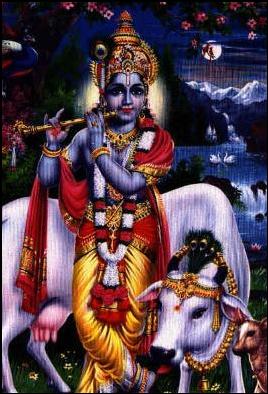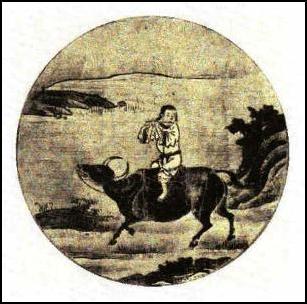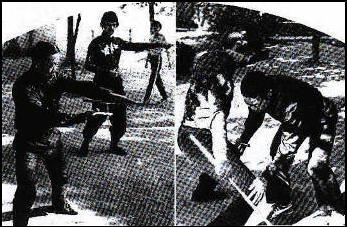




|
Home |
|
Classes |
|
Syllabus / Styles |
|
Biography |
|
Poetry |
|
Photos |
|
Articles |
|
Labyrinths |
|
Storytelling |
|
Artwork |
|
Respects Due |
|
Contact |
|
Links |


|
...with a spirit of self-exploration |

|
Pennine Tai Chi |



|
The Silent Flute |
The Flute as a Weapon?To many people, it is a surprise to hear of the flute being used as a weapon. So what are the origins of this art? I first came across this art in the early 1970’s. I learnt the flute form along with several other arts from Danny Connor. He had learnt it from his teacher Sifu Lu Chin Hun in Taiwan. The story that came along with it, concerning its origins, was that many monks at the temples in China, would make and play bamboo flutes. When travelling about the country, these would be taken with them as company for the journey. The image springs to mind of a monk, pausing to sit beneath a tree, gazing over a particularly inspiring scene, and after a while feeling moved to take his flute and let its sound blend with that of the day. However, in these times there were many robbers and bandits about, so the monks also developed the use of the flute as a weapon. Flutes have been made of bamboo, bone, jade, wood, iron, steel, silver, gold and platinum amongst other materials. The material obviously affects the sound, but even when of the lightest construction, it can instantly take on a second use as an effective weapon. The flute that I work with is of walking stick length, being about 30 - 32 inches and made of bamboo. Reeds or bamboo are probably the earliest construction materials and these flutes have claims to be one of the earliest, if not the earliest instrument. Such instruments are found in some form in almost all cultures and were probably invented independently in a number of places. It is easy to imagine the fascination that people had when hearing the sound that wind produced when it blew over cut reeds or bamboo. They would undoubtedly have noticed how different widths and lengths gave varying pitches and tones. It would have been a natural progression from this, to using the breath to make sound, and from here, to use that sound to imitate the sounds of nature and perhaps to express something of the feelings of the player. Another theory is that the first flutes were made from animal bones. Early hunter-gatherers not only ate the animal meat but would also have gouged and sucked marrow from the bones. This would render them hollow and a suck could become a blow to produce sound. This sound may have come to express the celebration of the feast whilst at the same time retaining some of the spirit of the animal to which it paid homage. A natural extension of this process of discovery would be the early use of the flute as a weapon. There is early evidence of flutes being used as projectile launchers or blowpipes for firing darts and powders.
The Flute FormI think that three of us learnt the full ‘Silent Flute Form’ from Danny, and it has been one of my favourite forms ever since. To date I have taught it to a small number of people, several of whom have been teachers. They in turn have found the art inspiring enough to go on to teach to others. I am fortunate to have contact with a musician / instrument maker who makes tuned flutes to the specifications I request. Amongst the more unusual of these is a 6-foot staff with 3 flutes along its length meaning that 3 people can sit side by side and each play one section of it. My interest in both music and martial arts has encouraged me to look into the symbolism of the flute in different cultures. I will complete this article by sharing some of these thoughts and insights. |

|
Middle East – SufismThe 13th century poet and mystic, Rumi, founder of the whirling dervishes, likened the human being to the flute. He says: ‘the reed has been separated from the reed bed – and so, when played by a human being – it always carries something of the grief and lament of being separated from its source.’ Likewise he says: ‘humanity feels a yearning to be one with our source and we express this through language, poetry and the arts.’ The whirling dance of the dervishes is usually done to the music of the flute.
China – TaoistOne of the 8 Immortals – Han H’siang Tzu is sometimes depicted with a flute. It is seen as an emblem of harmony, humility and humanity. The 10 Ox Herding Pictures are used as a meditation and contemplation tool in Zen. They are an extension of an earlier Taoist sequence of 8 pictures. Picture number 6 shows a boy riding an ox or bull and playing a flute. This is the stage in the story where the ox and boy are becoming as one. In an adapted form this has become a popular image in Chinese artwork. |

|
In his commentary on this picture, the 12th century Chinese master Ka-kuan wrote the commentary:
Mounting the bull, slowly I return homeward. The voice of my flute intones through the evening. Measuring with hand-beats the pulsating harmony, I direct the endless rhythm. Whoever hears this melody will join me.
Grandmaster Chan Poi in his excellent but gruesomely titled book ‘Fatal Flute and Stick Forms’ says: ‘the flute is not a weapon of the tiger nature, nor the dragon, nor the snake; rather it is a weapon with a powerful human nature. The flute allows only the human spirit to be projected.’ It is empty and hollow, only coming to life when the human spirit moves it, and he adds: ‘its music purely reflects the nature and character of the one who plays it.’ In the original Kung Fu series, Kwai Chang Caine carries a flute on his travels. Evidently, David Carradine introduced the idea and made the flutes himself. In ‘The Spirit of Shaolin’ he says: ‘it is important for a man to be soft, a true martial artist should be well rounded. Traditionally, the warrior should also be an artist. He should draw or paint, or make things with his hands, or play a musical instrument.’
The I Ching has this to say:
The dark is dissolved by the penetrating light. The gentle wind disperses the gathering clouds, leaving the sky clear and serene. The tiny soft roots of wood pierce the hardest rock, breaking up those dark intrigues which shun the light of day. All the while, the whispering music of the wind, and the gradual uncurling of the leaves produce tranquillity and peace, appearing soft, gentle, unthreatening. The results of gentle penetration by the wind are less striking than the effects of aggressive force, but far more enduring and more complete.
Bibliography Zen Flesh, Zen Bones compiled by Paul Reps and Nyogen Senzaki Fatal Flute and Stick Forms by Grandmaster Chan Poi The Spirit of Shaolin by David Carradine Open Secret – Versions of Rumi by John Moyne and Coleman Barks |
|
When Krishna plays the flute, the whole world is filled with love. Rivers stop, stones are illuminated, lotus flowers tremble, gazelles, cows and birds are entranced, demons and ascetics enchanted. Bhagavata - Purana |
|
India – HinduismKrishna is often depicted playing the flute in a characteristic pose. Here it is said that the flute represents ‘the voice of eternity, crying to the dwellers in time’. Its music is the players breath / spirit made audible. |

|
Sifu Lu Chin Hun and Danny Connor ‘play’ the flute form (about 1972) |
|
Krishna the flute player and cowherder |
|
Riding the Bull Home |